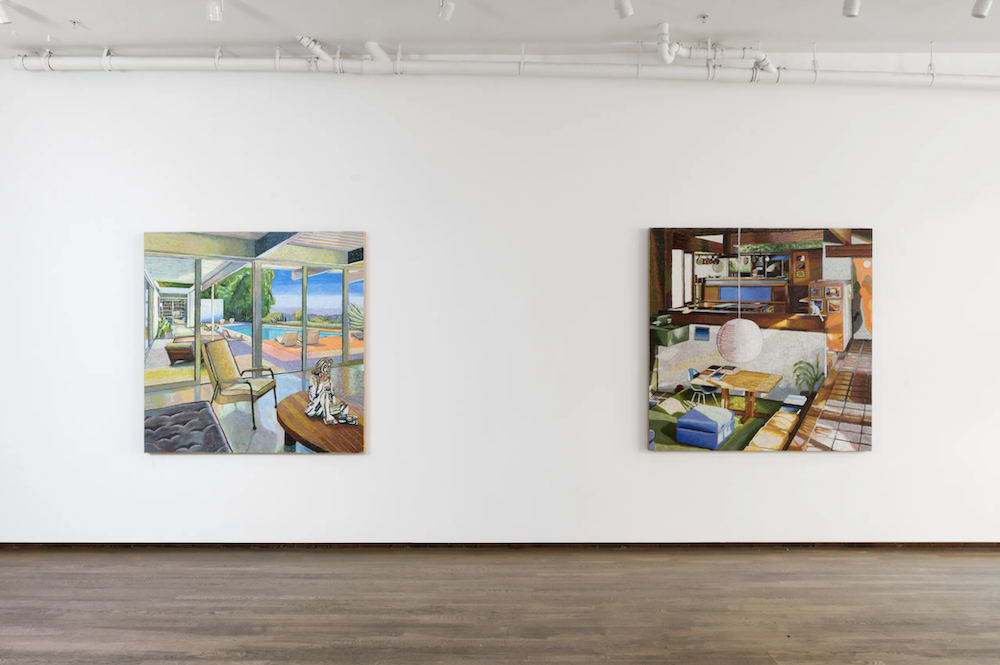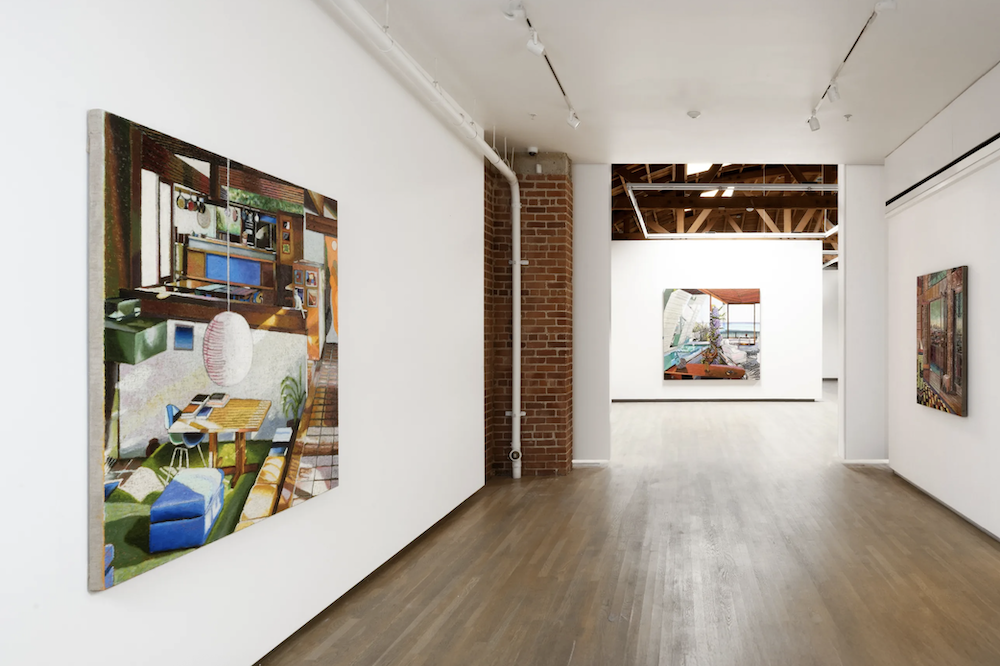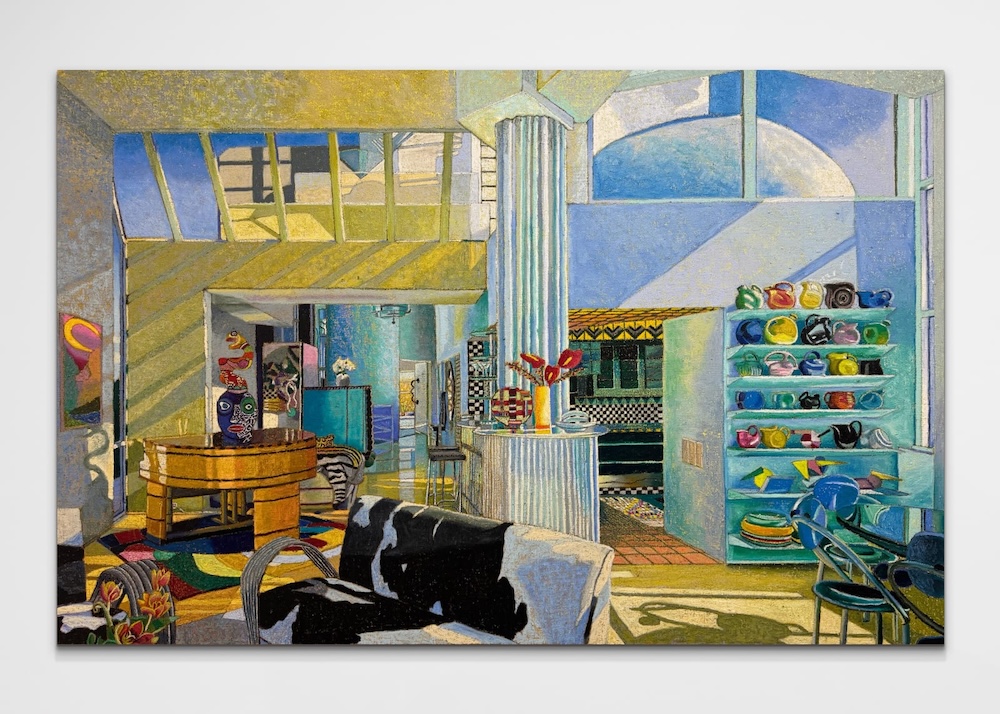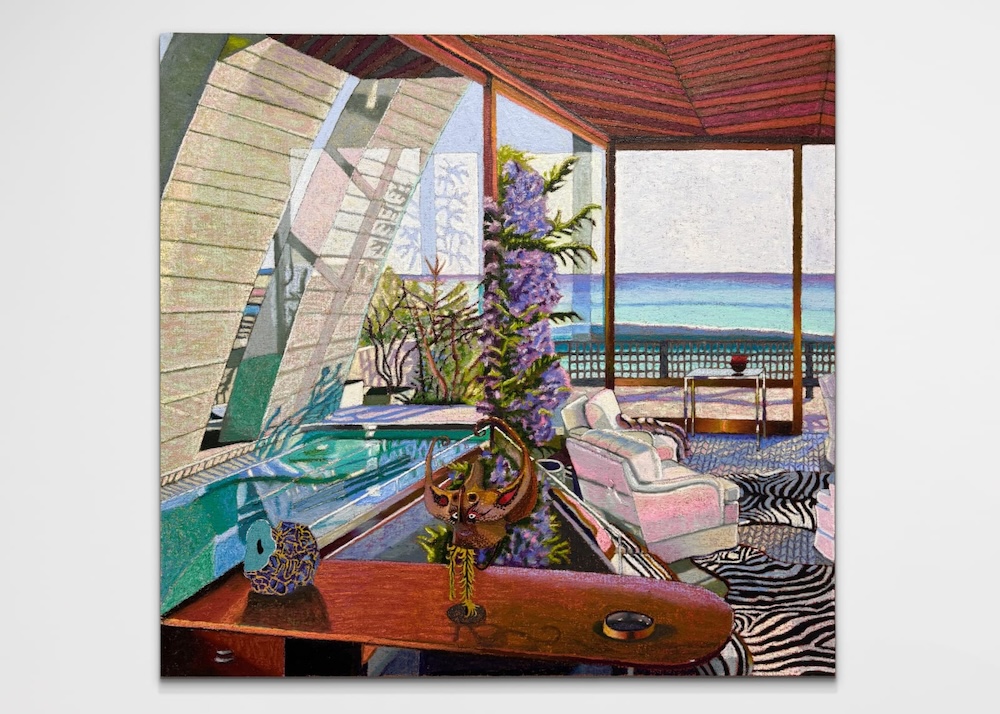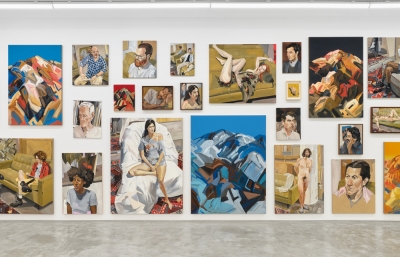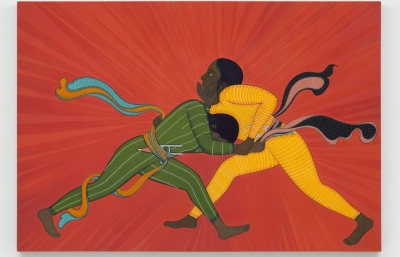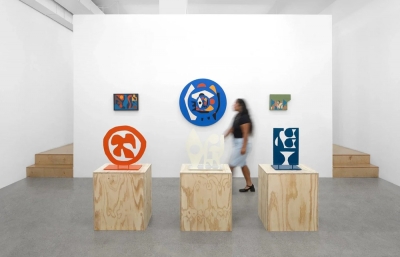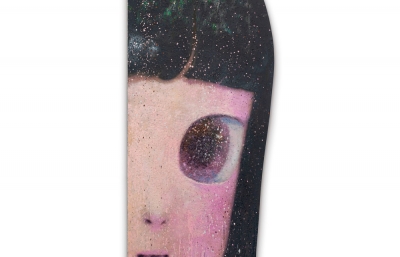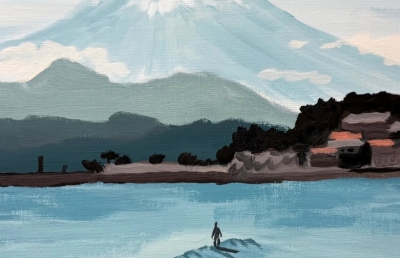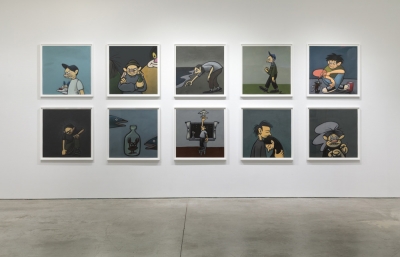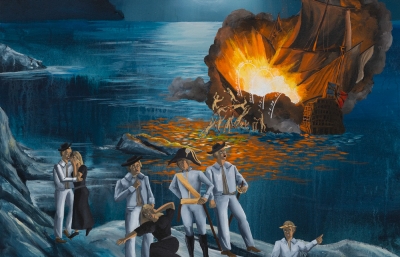Nazarian / Curcio is pleased to present Jacaranda June, JJ Manford’s debut solo exhibition with the gallery. In Jacaranda June, Manford continues his exploration of imagined domestic interiors and landscapes, weaving together art historical references, personal memory, and popular culture—all set against the backdrop of iconic Los Angeles architecture. Drawing inspiration from John Lautner’s Garcia House on Mulholland Drive and Stevens House in Malibu, Frank Gehry’s Wosk Residence, and homes by Rudolph Schindler, Charles and Ray Eames, and Ray Kappe, Manford taps into the legacy of mid-century modernism that shaped much of Southern California’s architectural identity. These homes—emblematic of an era that championed innovation and seamless integration between interior and exterior—represent more than structures; they embody a cultural moment that continues to shape architectural discourse today.
Working with oil stick, oil pastel, and Flashe on burlap, Manford creates richly textured surfaces that radiate with color and atmosphere. Each composition is a carefully orchestrated environment, where architectural forms, artworks, and ornamental details converge in quiet, uncanny harmony. His spaces, though meticulously constructed, remain fluid and dreamlike—part remembered, part imagined.
Though absent of human figures, the paintings are saturated with human presence. Everyday objects and iconic furnishings appear alongside artworks by Isamu Noguchi, Viola Frey, Ed Paschke, Betty Woodman, and Kenneth Price, among others. Each item functions as a marker of interior life, transforming domestic settings into portraits of their would-be inhabitants and turning documented spaces into imagined narratives. In many ways, the homes Manford references evoke a collective longing for the optimism and openness of mid-century modernism in Los Angeles—a time when architecture promised new possibilities by blending the natural environment with the built world.
Manford’s practice explores the thresholds between inside and outside, past and present, reality and imagination. While his paintings draw from real architectural landmarks, they are not literal recreations but emotional spaces that reflect the essence of Los Angeles modernism—where the line between interior and exterior is often blurred. These homes, with their open plans, glass walls, and seamless relationship to nature, symbolize a spirit of innovation and idealism that continues to resonate.
In the wake of the 2025 fires that erased several key landmarks across Los Angeles, Manford’s paintings stand as both a tribute to the city’s architectural legacy and a hopeful assertion of what might still be preserved, even as climate change casts a growing shadow over its future. Through luminous depictions of light, space, and form, his work evokes a vision of domesticity that feels optimistic, intimate, and uncanny, capturing a sense of quiet possibility. Like the slow bloom of a jacaranda in June, meaning in Manford’s work emerges gradually, inviting reflection on what endures amid change.



